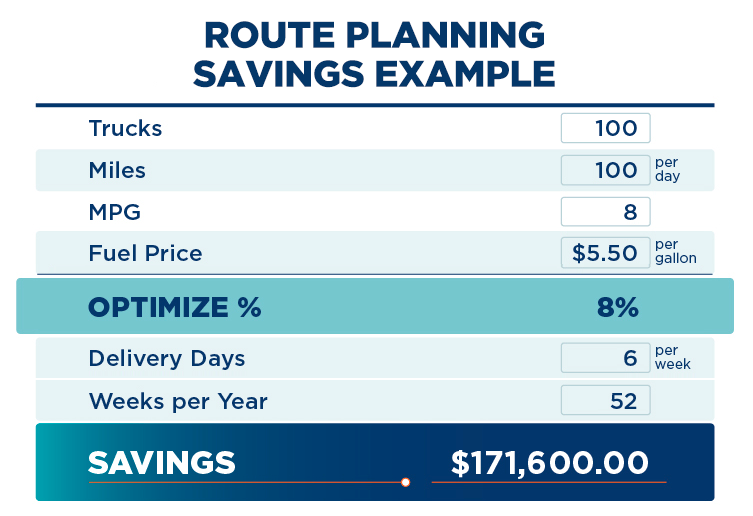Want To Stay Competitive? Use Tech To Plan Your Routes Daily, Not Annually
Viable route planning is a daily requirement in today’s dynamic delivery environment. Technology has evolved to the point where it shoulders that responsibility for you and ensures that all routes are optimized, safe and economical.
On the surface, planning an economical and logical route seems straightforward enough. In reality, the process is anything but simple. Fortunately, technology has advanced to the point where it automates many steps in the process, thus ensuring the smoothest possible passage for drivers as they make their way through their daily delivery schedules.
Static Route Planning Doesn’t Work Anymore
Rewind the clock back 15 years when parcel carriers were using the same daily routes with the same drivers. Drivers stayed in place for much of their careers. Ship-to-home via parcel didn’t exist yet and trucks visited the same buildings day after day to make business deliveries. Route planning had already been evolving pre-pandemic, but the COVID-19 e-commerce boom pushed it into unfamiliar territory for many carriers.
Now, to get a viable plan organized for the day — and across all drivers and vehicles — organizations must be able to:
- Create balanced route territories and logical sequences that enable the efficient loading and unloading of delivery vehicles.
- Manage in the face of a labor shortage, driver turnover and increased absenteeism, all of which can negatively impact a parcel carrier’s operations.
- Develop safe routes that ensure deliveries are made on the right side of the street (whenever possible).
- Ensure drivers don’t make unsafe turns across oncoming traffic while driving large vehicles.
- Accommodate completely new residential routes every day at a time when parcel carriers rarely deliver to the same home two days in a row.
- Manage route inconsistencies and order volume fluctuations through the year — not just during the holidays or other peak seasons — and work with a designated number of vehicle resources.
This needs to happen consistently for every route daily. It’s also taking place in an environment where fuel costs are fluctuating. The current deficit of 80,000 truck drivers is expected to reach 160,000 by 2030 and e-commerce sales will cross the $1 trillion threshold for the first time in 2022 and then continue growing by 9.4% annually. Combined with other outside factors — soaring operating costs, ongoing supply chain disruptions, etc. — these realities are pushing parcel carriers to rethink their route planning strategies.
Effective Change Management
Over the last few years many different factors have contributed to the evolution of route planning — both on the operational side and on the technical side of the equation. For example, dramatic fluctuations in daily service volumes, high driver turnover and higher fuel costs have all complicated the process of building an efficient, daily last-mile logistics plan.
On the positive side, technical changes to route planning — including better data (digital maps) and faster computing power — are compelling more and more organizations to deploy modern route optimization and planning tools.
It’s important to note that route planning and optimization are not the same as in-cab technology like telematics, GPS and navigation applications. These are all tactical tools to help drivers “react” once they’re already on the road.
Route planning, on the other hand, happens on a large scale and before routes are even dispatched. Building a strategic daily route plan that includes balanced workloads and efficient service order sequences for hundreds or thousands of trucks — and then ensuring the viability of those plans — are all critical tasks that are handled by route planners.
Effective route planning becomes even more important as a company’s volume of deliveries and/or services increase. The higher the density of deliveries, the more efficient a plan can be and the more pressing need for an automated daily planning tool.
Route Planning is a Daily Task
As the Great Resignation continues and high driver turnover continues to challenge parcel carriers, the bright spot may be the influx of newer drivers that are coming into the industry. Unlike their predecessors, many of whom were accustomed to running the same routes for years, newer drivers may be more eager to adapt to changes and use modern technologies.
This will be an important “win” for organizations that are dealing with even more frequent changes to daily route plans.
With fuel costs fluctuating, parcel carriers need to optimize routes daily. For example, a fleet of 100 vehicles driving an average of 100 miles per day can save 8% in fuel costs (at least $170,000 per year) by optimizing route planning. This savings doesn’t even factor in benefits like reduced number of vehicles, reduced maintenance and payroll savings.

Sitting down at your computer once a year to design territories that provide balanced, optimized workloads for your drivers doesn’t cut it anymore; route planning is now a daily task. Using route planning and optimization solutions from leading providers allows you to easily plan, optimize and adjust routes every day.
Now more than ever, route optimization and planning are critical to every parcel carrier’s operations. As the pace of business accelerates and as more demands are placed on them, these companies need tools that help them work smarter and remain competitive.
View the full article here.
Ready to get started.
Get in touch with us.
Contact Us




